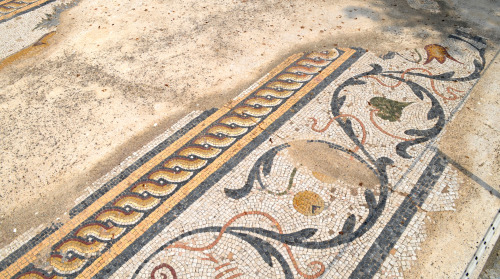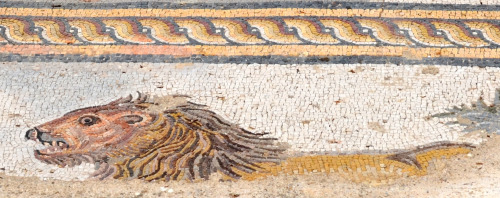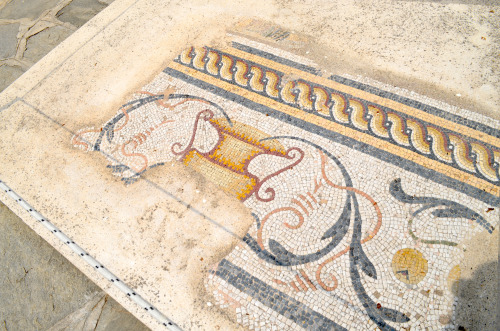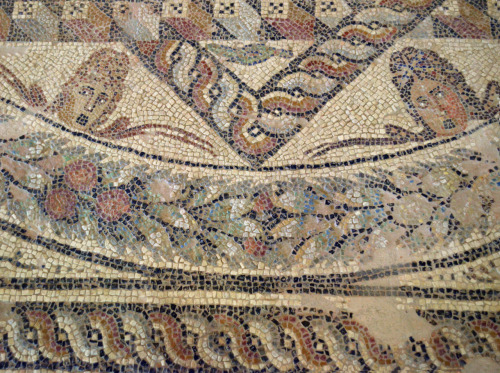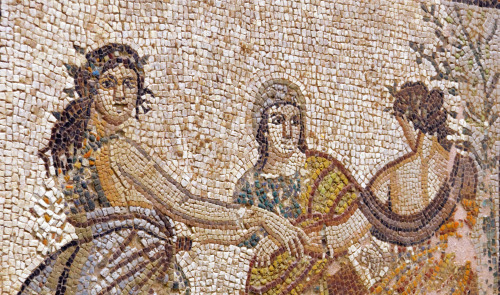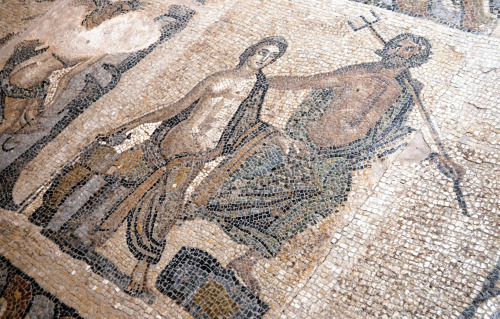#μωσαϊκά
Cyclades, Archaeological Museum of Paros:
Mosaics with a depiction of the labours of Hercules. The mosaics probably belonged to a public building, possibly a gymnasium dating circa 300 A.D. They were discovered in the premises of the Byzantine church Panagia Ekatontapyliani in Parikia, Paros
Post link
Crete, Archaeological Museum of Chania
Panel with the legend of Dionysos and Ariadne of Naxos, from the Triclinium of the House of Dionysos.
In a large panel Dionysos is depicted on a panther followed by a satyr. In the border part, the artist’s signature is preserved indicating his provenance; Daphne, a suburb of Antioch, where there was a famous mosaic school at the time. The legend of Dionysos and Ariadne of Naxos is depicted in the best preserved smaller panel. The comic masks allude to the relationship of Dionysos with theatre.
Dated 3rd century A.D
Found in the town of Chania (ancient Kydonia), near the Market Square in 1977.
Post link
Crete, Archaelogical Museum of Chania:
Decorative, square from the triclinium of the House of Dionysos.
In the large panel Dionysos is depicted on a panther followed by a satyr. In the border part, the artist’s signature is preserved indicating his provenance; Daphne, a suburb of Antioch, where there was a famous mosaic school at the time. The legend of Dionysos and Ariadne of Naxos is depicted in the best preserved smaller panel. The comic masks allude to the relationship of Dionysos with theatre. Found in the town of Chania (ancient Kydonia), near the Market Square in 1977.
Dated 3rd century A.D.
Detail from another one of the squares.

Post link
Crete, Archaelogical Museum of Chania:
Decorative, border details from the triclinium of the House of Dionysos.
In the large panel Dionysos is depicted on a panther followed by a satyr. In the border part, the artist’s signature is preserved indicating his provenance; Daphne, a suburb of Antioch, where there was a famous mosaic school at the time. The legend of Dionysos and Ariadne of Naxos is depicted in the best preserved smaller panel. The comic masks allude to the relationship of Dionysos with theatre.
Dated 3rd century A.D
Found in the town of Chania (ancient Kydonia), near the Market Square in 1977.
Post link
Crete, Archaeological Museum of Kissamos:
Mosaic of Horae and the Seasons
Vasilios Paterakis plot (1979), north side of El. Venizelos Square.
The main composition of a floor mosaic from a dining room (triclinium). The mosaic was extended with three more panels, each with a separate subject/theme a) hunting scene, b) a colourful scroll of living birds, and c) a series of squares with exotic birds and fruits. The dining room was T-shaped and the figural mosaic covered the floor of the vertical (north-south) part of the T. The horizontal bar of the T had mosaics decorated with geometric patterns.
The square composition exhibited consists of the personifications of the four Seasons in the corners, and the mythological Horae with attributes of the Seasons in a circular dance around a circular altar. The tree symbolizes the idea that the Horae are deities of vegetation. The trinity recalls the older, Hellenic division of the year into three seasons. The circular dance symbolizes the renewal of nature. The mosaic’s combination of the four Seasons with the mythological trinity of the Seasons (Horae) is unique.
The rendering of figures, the details, and the movement indicate a skillful artist and recall a lost Hellenistic painting.
Date 2nd half of the 2nd century A.D
The four seasons at the corners of the mosaic.


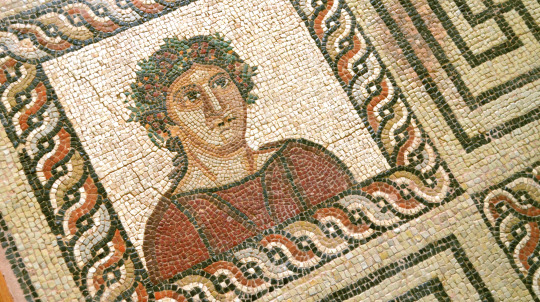
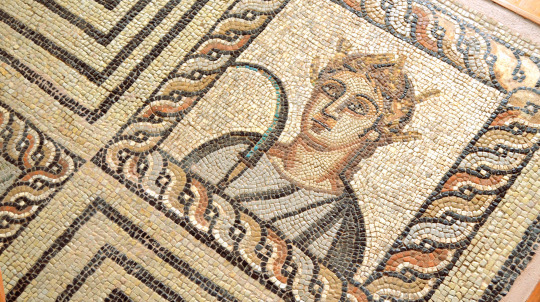
And a full view of the exhibit.
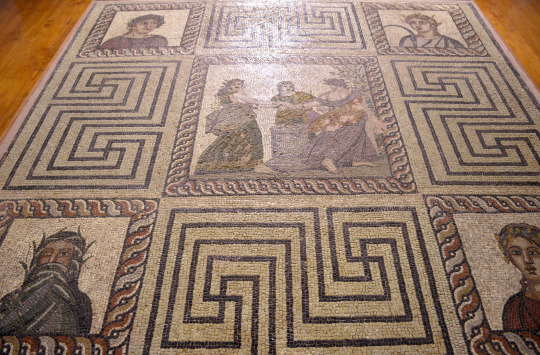
Post link
Crete, Archaeological Museum of Chania:
Mosaic of Poseidon and Amymone.
The central part of the “triclinium” of a private house from greco-roman Kydonia. The depicted myth is developed in two scenes: On the left Amymone is attacked by a satyr at Lerni spring. On the right, Poseidon helps Amymone, after rescuing her. In a separate frame a cock fight is depicted as an allusion to the erotic quarrel.
Dated to the middle 3rd century A.D
Found at the town of Chania (1866 square) in 1937.
Detail from a decorative medallion depicting a Medusa head.

A full view of all the scenes depicted on the mosaic.

Post link


